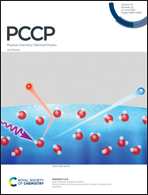Facile synthesis of multiphase cobalt–iron spinel with enriched oxygen vacancies as a bifunctional oxygen electrocatalyst†
Abstract
The multiphase cobalt–iron spinel was firstly synthesized via a facile cold plasma method and applied as a bifunctional electrocatalyst for the oxygen reduction reaction (ORR) and oxygen evolution reaction (OER). Compared with the single-phase obtained by the traditional calcination method, the CoFe2O4 and Co3O4 phase were obtained by the plasma method. The multivalence states of cobalt and iron facilitated electron transport in electrochemical reactions. The plasma sample had a small particle size (5 nm) due to the low operation temperature. Notably, electron impact produced more oxygen vacancies and a larger surface area on CoxFeyO4, which increased the active sites and electronic conductivity. Electrochemical investigations indicated that the multiphase spinel obtained with a quasi-four-electron transfer process showed an onset potential of 0.76 V versus the RHE for the oxygen reduction reaction. In the oxygen evolution reaction, the potential of current density at 10 mA cm−2 was 1.53 V versus RHE. As for the overall electrocatalytic activity, the multiphase spinel had a ΔE (the difference between E10(OER) and E1/2(ORR)) of 0.89 V, exhibiting greater bifunctional activity than the other prepared catalysts.



 Please wait while we load your content...
Please wait while we load your content...